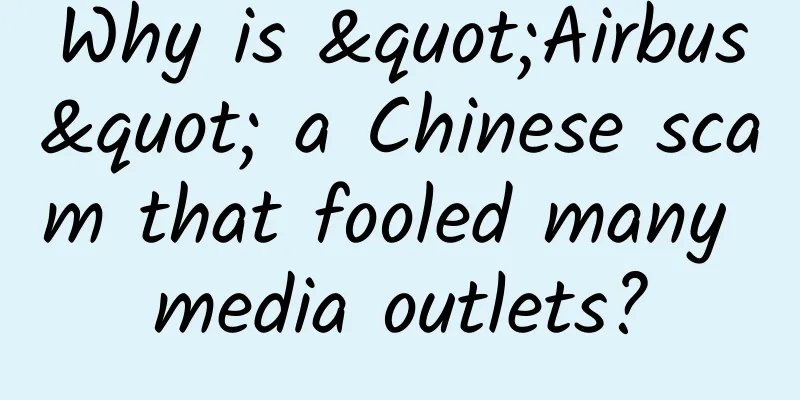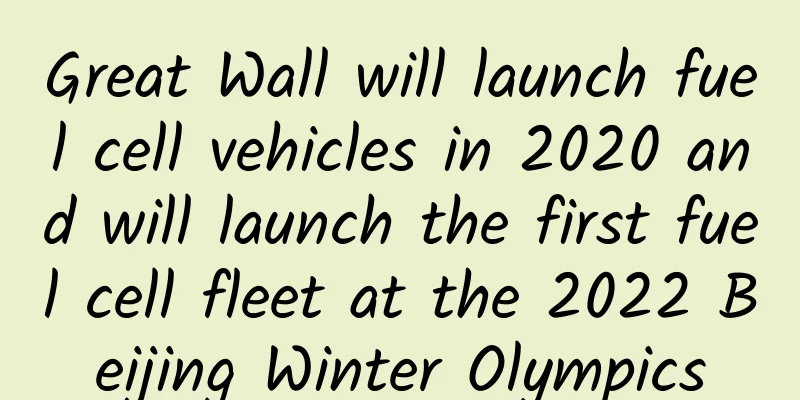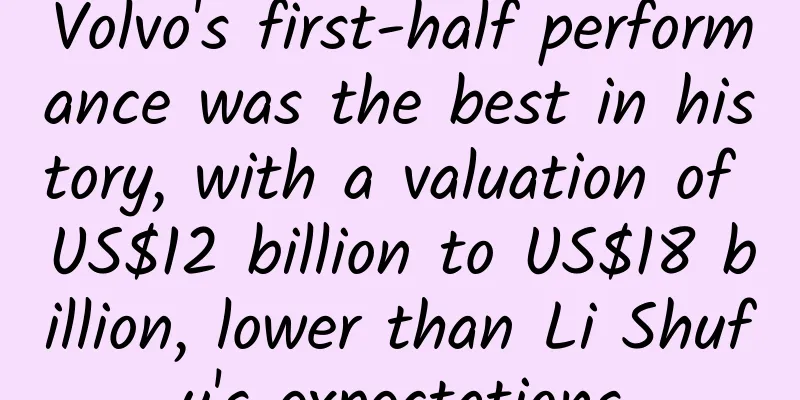Why is "Airbus" a Chinese scam that fooled many media outlets?

|
If I tell you that a technological invention that has been praised by major media outlets across the country is actually a "big scam", would you believe me? Yes, it is the "3D Express Bus/Airbus/Pakistan Railway" that made headlines in various media outlets across the country yesterday with a "road test". Of course, it doesn't matter what you call it. This may not be the first time you have seen, heard or understood this term. If you still don’t know about this “innovative invention”, you may want to read two other related articles published by iFanr at the end of May and last month: May 30: "The 3D bus that was all over your screen a few days ago is probably a big scam" July 4: "The '3D Express Bus' test vehicle rolls off the production line. Choose one: more reliable or continue to fool people" It was thought that after more and more people raised doubts, the "3D Express Bus/Airbus" and the Pakistan Railway Company behind it would be able to "calm down" a little, but they chose to "go against the current." There is no other way, so I have to "waste" another article to uncover the "true face" of this project. On the afternoon of August 1, the Pakistan Railway conducted a planned "road test" at its original location, Fumin Road in front of Beidaihe Station in Qinhuangdao City. The purpose of the test was set to "test braking distance, power consumption, and examine the relationship between the vehicle and the road, and between people and the vehicle." Although it is called a "road test", there is actually not much test content: it drives out from the warehouse, moves forward 20 meters at the speed of a person, and then stops next to a specially built platform. Soon, news stories appeared on the front pages of major websites like fireworks across the sky, including many well-known professional portal media: Pictures speak louder than words! This is not a simulation, the Pakistan Railway is really on the road! (Xinhua News Agency) Super shocking! The Chinese-made "Airbus" is really coming, with pictures and truth ( Sina Finance) Traffic jam relief tool! my country's independently developed "Airbus" hits the road: Insiders are stunned (Fast Technology) China's most powerful bus "Bati" debuts: trial run is successful (IT Home) The "Airbus" is coming! Will it revolutionize human transportation? ( Sohu Auto) But things soon took a turn again within half a day, and major domestic media began to "reissue" articles questioning this project, focusing on the private equity fund issues of the project that iFanr had mentioned in previous articles. It’s abominable to cheat people out of money, but is this project “reliable”? Can it really change the way we travel? Although everyone has doubts, they cannot get more evidence, and the final description is that “further experiments are needed”. Today, iFanr will use the most scientific "approach" to help you understand the "problems" in this project. Two main questions: wheels, tracks & frames 1. The "wheels and tracks" used in this experimental vehicle In all previous publicity for the Pakistan Railway, it used a steel rail system. The working principle of this method is no different from that of trains and subways, and it is also the choice of most of the current efficient transportation systems. But in this experiment, the actual moving mechanism you see is this - a solid rubber wheel. (You can think of it as an oversized market shopping basket wheel with a motor in the middle) You read it right. The concrete road in the middle of the lower right corner is the track. The actual track is even simpler, a resurfaced cement surface with two small grooves on the side that pose no restrictions on the wheels! After adopting this system, the problems that followed were also very obvious: The possibility of an Airbus derailment is everywhere: because there is no restriction on the direction of the rubber wheels, an obstacle the size of a stone can cause the 100-ton Airbus to deviate from its route, instantly turning it into the largest road killer in the country in terms of size and tonnage. The weight of the "Airbus" can only be transmitted through the contact of 16 solid rubber wheels. Regardless of whether the wheels can withstand it, ordinary road surfaces will definitely not be able to withstand this pressure. The stability problem is serious: during driving, there is a high probability of violent vibrations similar to those on a roller coaster at high speed. At the same time, the shock absorber uses a single hydraulic cylinder, which cannot respond quickly to offset the left and right swing of the vehicle during its movement, posing a safety hazard. Perhaps, you still want to explain it by saying "this is an experimental vehicle, we will replace the rail and steel wheel system later". No problem, we will continue to analyze this situation below. 2. Structural problems of the experimental vehicle itself In the corresponding report of iFanr, "The "3D Express Bus" test vehicle rolls off the assembly line, more reliable or continuing to fool people, please choose one of the two", the construction process of this experimental vehicle has been exposed to a certain extent. Thanks to the help of the official website of Pakistan Railways, we have a few more key photos this time: Doesn’t it look like a factory shed? The entire frame is made entirely of welding, even the key "door-shaped" structure. It is even obvious that the "feet" on both sides are not integrated with the actual "cabin". You know, the basis of the trains we ride now is made of a whole piece of metal plate. In contrast, the "Airbus" uses a metal frame with hundreds of welding points. Under the metal fatigue caused by bumps, turns and vibrations, it is not far from falling apart. What’s even more interesting is that there are reports that Jinchuang Group, which was responsible for building this experimental car, had just been disqualified from producing passenger cars this year. Judging from these two questions alone, this public and eye-catching "road test" has lost its significance. Core question: How does it turn (with rigorous calculations)? How to turn has always been the main question people have about Airbus, but because Airbus has never officially installed its own "feet", the entire calculation cannot be carried out until today. The experimental vehicle was equipped with four independent bogie systems, and actually used a rubber wheel system, rather than the common rail and steel wheel combination of ordinary rail transportation vehicles. We have briefly analyzed the problem of the former above, so why did Pakistan Railways not choose the rail and steel wheel combination in the end? The reason is simple: I really can’t turn around. By analyzing the photos and data of this experimental vehicle, we can infer the following data: the vehicle is 12 meters long and 7 meters wide, and the actual front and rear "wheelbase" (the distance between the two bogie rotation axes) is approximately 9 meters.Because the four bogies rotate independently, the inner and outer angles to the track are different, but the bogie's rotation axis remains unchanged and certain geometric relationships are satisfied. So how do we measure whether a train has been able to make the transition? This involves the fundamental principle of rail transit - to avoid derailment as much as possible. Note: The gray is the track, with a spacing of a; the black is the carriage, and the four corners represent the wheels; when the track curvature/turning radius is too small, a gap in the red circle will appear, eventually leading to derailment The distance between the two tracks in the rail system is always the same, but due to the influence of the bogie mechanism and the length of the carriage, the distance between the tracks that the wheels touch will increase. Once this actual distance is too much larger than the normal distance, the vehicle will derail. After consulting relevant experts in rail transportation, we learned that this difference can be up to 15 mm for trains. As for how serious the dangers of derailment are, you can directly search for the numerous train accident cases in India. After substituting the above geometric relationship into the coordinate system and finally obtaining an equation, we can use the online calculation tool to obtain the theoretical minimum turning radius of the "Airbus" - 65 meters (short radius), which means that the outside of the "Airbus" will draw a circle with a radius of 72 meters. That doesn't seem like a lot, just two digits. But what you actually need is some comparison values: 72 meters. According to the national standard of "3.5 meters per lane", if the "Airbus" wants to make a 90-degree turn, you need an intersection with a width of "21/22 lanes in both directions". Even the famously spacious Chang'an Avenue in Beijing has only 12 lanes in both directions. If even Chang'an Avenue is not suitable, how many roads in major cities across the country can meet such turning requirements? If this sky bus can only go in a straight line, then what advantages does it have compared to the relatively independent BRT systems in some cities? Of course, you can also choose not to occupy so much road and turn to the space next to the road. The number will reach an astonishing 900 square meters. The "nail households" alone will be enough to give Airbus a hard time. It should also be noted that the value of 72 meters is only a theoretical "limit". The usual engineering practice is to magnify this number to achieve higher safety. Finally, it is not difficult for us to draw a conclusion based on the context: The "Skybus" cannot use steel rails and steel wheels because it cannot turn in the city; But the same "Airbus" cannot use the rubber wheel system because it is too dangerous. At this point, we can say that Airbus's foot is already "lame". Experts and scholars: It's just a fantasy In order to analyze this "road test" more scientifically and comprehensively, ifanr (WeChat ID: ifanr) also interviewed Professor Lian Songliang from the School of Transportation Engineering of Tongji University, a scholar with more than 20 years of experience in rail engineering teaching. He said: How to turn is definitely a big problem for the "Skybus". Currently, the turning radius of domestic high-speed railways is more than 3,000 meters, the minimum turning radius of Shanghai Metro is 150 meters, and the turning radius of trams is the smallest, but it is also 60 meters. The larger "Airbus" will undoubtedly have a larger number, which is not practical for application scenarios such as cities. At the same time, such a behemoth weighing more than 100 tons has to meet all the requirements for road clearance (no debris in the space swept by it when driving). This is not just as simple as transforming the road, but "building" a road specifically for it, and then making it compatible with ordinary traffic. This is a bit of "putting the cart before the horse". Another traffic engineer, Mr. Gu Xiaotao, who has been working in the industry for nearly 15 years, said: Moreover, the road conditions for the BRT are hypothetical and ideal, which are difficult to achieve in reality. For example, minibuses and other large vehicles cannot appear on the operating path. To ensure the safety of operation, height limit poles and other equipment must be installed at all entrances. In order to allow large vehicles to pass, 1 to 2 additional lanes must be added. The key complexity is that at intersections, when large vehicles want to turn right or left, they will inevitably invade the BRT lanes. How to deal with this? Therefore, it is difficult for the BRT to integrate into the existing road system. It is certainly not as easy and cost-effective as Pakistan Railways thinks. Not to mention that the possibility of actual operation is very small. Even if it succeeds, the cost-effectiveness is probably not high compared with other modes of public transportation. Of course, this requires more data support for calculation. The height limit below the Pakistan Railway is only 2.1 meters, which does not meet the tunnel design standards, and this is a moving tunnel. The drivers below cannot bear it psychologically. It does not achieve the effect they imagined. The "dark secrets behind the scenes" surfaced In earlier reports, we have mentioned the inseparable relationship between the Pakistan-China Railway Project and Huaying Kailai Fund, to which Huaying Group belongs.As early as May this year, a reporter from the "Daily Economic News" obtained an "Investment Promotion Report on the Pakistan-China Railway Project" from a salesperson from a subsidiary of Huaying. The report showed that Beijing Tianer Investment Fund Management Co., Ltd. is selling the "Beijing Pakistan-China Railway Project Fund" with a fund size of 50 million to 100 million yuan, a subscription amount starting from 1 million yuan, and an expected annualized return of 12%. The report also mentioned three highlights of the Pakistan Railway Project: In line with the national strategy, each vehicle can receive a government subsidy balance of 24 million yuan; With a scientific and fast profit-return model, not only can the platform be sold, but also electric taxis can be rented out; It has a rich industrial chain cluster chain, including various supporting companies such as vehicle production, infrastructure construction, passenger transport operations, and financial investment. To sum up, it is a sure win. At the "2016 China Financial Forum" held in May this year, Bai Zhiming, Chairman of Pakistan Railways, attended and delivered a speech. The following are some excerpts: In 2010, the Ba Tie was listed in the New York Times magazine as one of the world's top 50 inventions. Since the founding of the People's Republic of China, there have been millions of patents, but only this one has been listed in the Times magazine, because the subway has only been around for 132 years. It is also the Americans who said that if the Ba Tie had appeared 132 years ago, there would be no subway. We conservatively estimate that in the next 20 years, 500,000 units or 2 million units will be needed. China's current high-speed railways, such as Beijing to Shanghai and Beijing to Guangzhou, have a total of 12,800 units. The future market of Pakistani high-speed railways is 156 times that of China's high-speed railways. 156 times in 20 years divided by 20 is 7.5 times a year, which means Pakistani railways will need to build several more China Railway Corporations. According to the figures of the National Development and Reform Commission, every 100 million yuan investment in rail transit can increase GDP by 260 million yuan and provide employment for 8,000 people. Based on this figure, if we invest 3.5 trillion yuan in China alone, we can increase GDP by more than 9 trillion yuan. This figure is not exaggerated. It seems that China's future really depends on Pakistan. China's innovation is not an excuse to hijack attention, nor can it become a cover for defrauding money. As early as May 30 this year, iFanr first reported the incident with the title "The 3D bus that was all over your screen a few days ago is likely to be a big scam", which was very "out of the ordinary" amid the hype of mainstream media and TV stations. Why can a P2P financial company that plays with concepts and raises money projects survive until now? It can even go to various local "governments" to be received and held meetings. This may be what we need to think deeply about. To quote a comment from Zhihu user Percy Chen: I have to sigh: Chinese people are too tolerant and kind to "innovation"! However, this tolerance and kindness have been exploited by evil. I no longer have any hope of using this article to let as many people as possible know the truth about this Chinese scam, but I would like to borrow the above Zhihu user's comment to remind my fellow media colleagues: If one day investors are cheated badly or even the company absconds with the money, you will all be accomplices. "Airbus" has brought Chinese-style scams into thousands of households. I hope this is the last time. As a winner of Toutiao's Qingyun Plan and Baijiahao's Bai+ Plan, the 2019 Baidu Digital Author of the Year, the Baijiahao's Most Popular Author in the Technology Field, the 2019 Sogou Technology and Culture Author, and the 2021 Baijiahao Quarterly Influential Creator, he has won many awards, including the 2013 Sohu Best Industry Media Person, the 2015 China New Media Entrepreneurship Competition Beijing Third Place, the 2015 Guangmang Experience Award, the 2015 China New Media Entrepreneurship Competition Finals Third Place, and the 2018 Baidu Dynamic Annual Powerful Celebrity. |
>>: How many technology companies are needed to host a modern Olympic Games?
Recommend
Iran unveils new drone, here's a look at its performance
Recently, the Iranian Ministry of Defense launche...
What is the difference between user operations and dating?
I seldom mention my love life in my articles. Fir...
Traffic is becoming more and more expensive, how can we still invest in information flow advertising?
There is no need to say that traffic is becoming ...
How to increase website user activity by attracting new users and promoting activation
User activity is an eternal pain in the hearts of...
The necessary logic of brand communication plan
Communication is only a subsystem in the brand sy...
[Smart Farmers] Are cockroaches an invasive alien species? What is the difference between the new Latin cockroach species "Xiao Qiang"?
In recent years, my country's economy has dev...
Getting started with information flow advertising: How can novices establish a correct data analysis logic system?
How to play information flow advertising ? Who sh...
Exclusive interview: An article that helps you truly understand DSP advertising
Although DSP and information flow have been aroun...
Nature has a set of "lazy" rules? You heard it right!
1. Introduction: Nature’s mysterious “lazy” law H...
Empowering TV terminals, LeTV Cast, with tens of millions of daily active users, creates a win-win business model
With the gradual explosion of mobile Internet con...
Event budget and execution promotion for event operation!
Many people who do operations will encounter a bi...
University of North Carolina School of Medicine: Study shows that e-cigarettes containing nicotine salts may cause more damage to immune cells than other e-cigarettes
A new UNC School of Medicine study finds that use...
Can trigger auroras! What exactly is the origin of geomagnetic storms?
Audit expert: Zhan Mingjin PhD, Chinese Academy o...
Will you become stupid if you hit your head too much? Bighorn sheep: You will, but I won't
There is a famous joke in the popular anime Demon...









